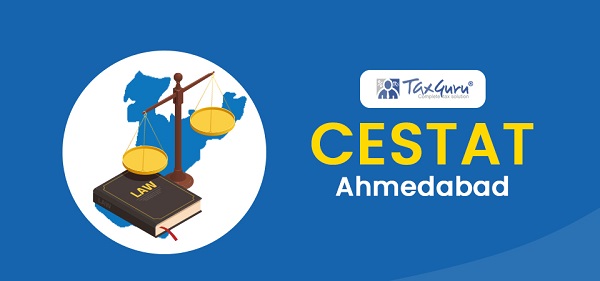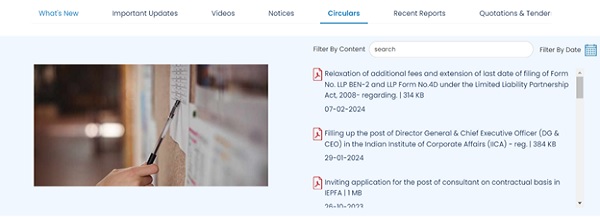Navneet Singal
National Pension scheme: Additional Deduction of Rs. 50,000/-. Whether further clarification is required?
A retirement plan is an arrangement to provide people with an income during retirement when they are no longer earning a steady income from employment. Retirement plan ensures that people live with pride and without compromising on their standard of living during advancing years. Pension scheme gives an opportunity to invest and accumulate savings and get lump sum amount as regular income through annuity plan on retirement.
The National Pension System (NPS) was launched by Government of India on 1st January, 2004 with the objective of providing retirement income to all the citizens. NPS aims to institute pension reforms and to inculcate the habit of saving for retirement amongst the citizens.
Initially, NPS was introduced for the new government recruits (except armed forces). With effect from 1st May, 2009, NPS has been provided for all citizens of the country including the unorganized sector workers on voluntary basis.

Currently, Investment in NPS can be made by the following sectors:
1. Central/State Govt. Employees
2. Corporates
3. All Citizen Model (Individual)
4. Unorganized Sector Workers
Every subscriber to NPS will be allotted a unique Permanent Retirement Account Number (PRAN). This unique account number will remain the same for the rest of subscriber’s life. This unique PRAN can be used from any location in India. It will provide excess to investment in two type of accounts:
1. Tier I Account: This is a non-withdrawable account meant for savings for retirement. (Tax benefit is available). Withdrawal is possible after 10 years of opening account or at the age of 60 whichever is earlier
2. Tier II Account: This is simply a voluntary savings facility. The subscriber is free to withdraw savings from this account whenever subscriber wishes. No tax benefit is available on this account.
NPS is an EET Scheme which means exempt at the time of investment, exempt at the time of appreciation and Taxable at the time of withdrawal.
Tax benefit provided under Income Tax Act, 1961 can be described as follows:
Tax Benefits At the time of Contribution in National Pension Scheme
Tax benefits to employer:
Contributions made by the employer (upto 10% of Basic + DA) is allowed as a business expense under Section 36 (1) (iv) (a) of Income Tax Act 1961
Tax benefit to employee:
Employer’s contribution – Eligible for tax deduction upto 10% of Salary (Basic + DA) contributed by employer under sec 80 CCD (2)
It is to keep in mind that this contribution is not included in overall limit of Rs. 1.5 lakhs as mentioned u/s 80CCE. It means that if any employee has basis salary of Rs. 30,00,000/- and his employer contribution Rs. 3.00 lakhs, he can get a deduction of Rs. 3.00 lacs u/s 80CCD (2). It can provide lot of tax benefit to employees under higher salary brackets.
Employee’s contribution – Eligible for tax deduction upto 10% of Salary (Basic + DA) under sec 80 CCD (1) within the overall ceiling of Rs. 1.5 Lac under Sec. 80 CCE.
Contribution by assessee (other than employee)- Eligible for tax deduction upto 20 % of his gross total income of the previous year (wef A.y 2018-19) under sec 80 CCD (1) within the overall ceiling of Rs. 1.5 Lac under Sec. 80 CCE.
Further w.e.f. FY 2015-16, in addition to the deduction u/s 80 CCD (1), deduction of Rs. 50,000 has been on contribution in NPS. (U/s 80CCD(1B))
It is to further clarify that if an corporate has not opted for the corporate plan and employees are making investment under the all citizen model i.e. on their individual basis, even in that case investment made by them can be claimed by the employee and the employer is liable to provide deduction u/s 80CCD (1) and u/s 80CCD (1B) to the employee under form 16.
In other words, it can be mentioned that an employee can claim overall deduction of Rs. 2,00,000/- (i.e. Rs. 1,50,000/- u/s 80 C/80CCC/80CCD(1) and Rs. 50,000/- u/s 80 80CCD(1B))
However, if we go through the provisions related to Pension Plan i.e. 80CCD literally, some ambiguity can’t be denied. New inserted provision 80CCD (1B) reads as follows :
“(1B) An assessee referred to in sub-section (1), shall be allowed a deduction in computation of his total income, whether or not any deductions is allowed under sub-section (1), of the whole of the amount paid or deposited in the previous year in his account under a pension scheme notified or as may be notified by the Central Government, which shall not exceed fifty thousand rupees:
Provided that no deduction under this sub-section shall be allowed in respect of the amount on which a deduction has been claimed and allowed under sub-section (1).
It means that additional deduction of Rs. 50,000 is in addition to the deduction allowed under sub-section (1). It can have two meanings
1. Additional deduction is after completion of 10%/20% limit as provided u/sub section of 80CCD.
2. Addition deduction is over & above the ceiling limit of Rs. 1,50,000/- as defined u/s 80CCE.
It I interpret as per point no. (1), to get additional deduction of Rs.50,000/-, I have to invest in NPS more than 10% of my basic salary wherever as per point no. 2, any investment in NPS can be considered as additional depreciation.
However, in the Budget Speech given by FM in the Lok Sabha, it is clarified by the example cited in the speech that the assessee can claim additional deduction even though he is within the limit of 10% of basic salary/20% of GTI, still it is better to clarify the situation by issuing a circular in this regard.
Taxation at time of withdrawal of money from pension fund
Where any amount standing to the credit of the subscriber in respect of which a deduction has been allowed together with the amount accrued thereon, if any, is received by him or his nominee, in whole or in part, in any previous year,—
(a) on account of closure or his opting out of the pension scheme; or
(b) as pension received from the annuity plan purchased or taken on such closure or opting out,
the whole of the amount referred to in clause (a) or clause (b) shall be deemed to be the income of the assessee or his nominee, as the case may be, in the previous year in which such amount is received, and shall accordingly be charged to tax as income of that previous year.
However, wef A.y 2017-18, if the amount is received by the nominee on the death of the assessee [on account of closure or his opting out of the pension scheme clause (a) ] shall not be deemed to be the income of the nominee.
Wef A.y 2017-18 : Any employee (who contributes to NPS) is allowed an exemption in respect of 40% on the total amount payable to him on closure or his opting out of the pension scheme u/s 10(12A)
Wef A.y 2019-20 the benefit of section 10(12A) shall be extented to non-employee as well.
Wef A.y 2018-19 any payment from the National Pension System Trust to an employee under the pension scheme referred to in section 80CCD, on partial withdrawal made out of his account in accordance with the terms and conditions, specified under the Pension Fund Regulatory and Development Authority Act, 2013 (23 of 2013) and the regulations made there under, to the extent it does not exceed twenty-five per cent of the amount of contributions made by him shall be exempt u/s 10(12B)
Further, the subscriber shall be deemed not to have received any amount in the previous year if such amount is used for purchasing an annuity plan in the same previous year.
(Author may be contacted at navneet.singal@gmail.com )
Read Other articles from Navneet Singal
(Republished With Amendments)





















